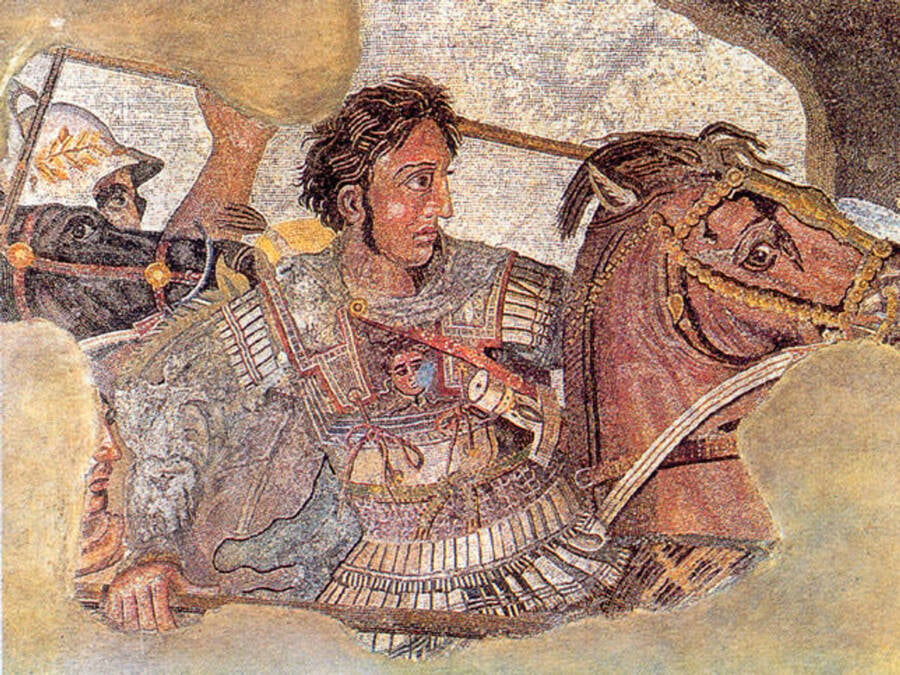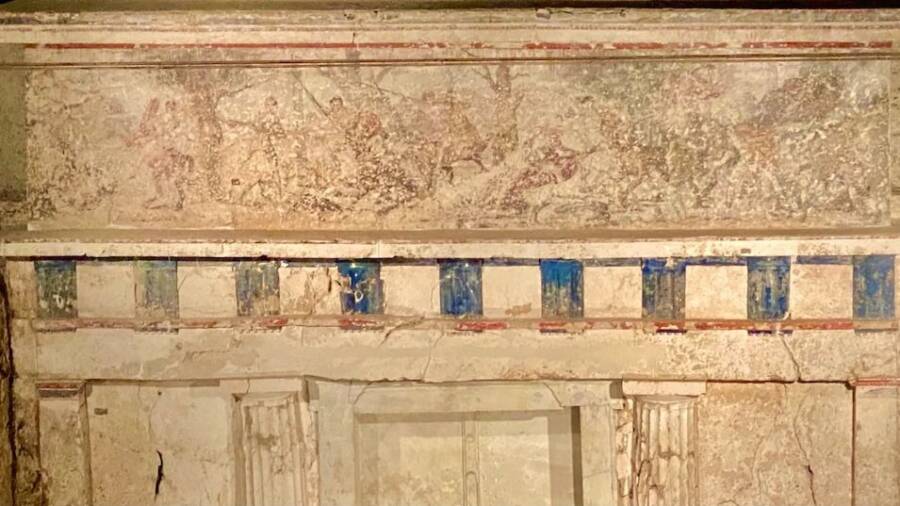Researchers have long believed that Alexander the Great's relatives were buried at the "Great Tumulus" in modern-day Greece, but the new study suggests that experts had the order of the tombs mixed up.

Public DomainAlthough the location of Alexander the Great’s tomb is unknown, the trio of tombs in Greece are thought to belong to several of his relatives.
For 50 years, researchers have been fairly confident that a trio of crypts in Vergina, Greece dubbed Tomb I, Tomb II, and Tomb III contain the remains of Alexander the Great’s father, his half-brother, and his son. However, a new study suggests that they were originally misidentified.
Its authors argue that Alexander the Great’s father, King Philip II, was laid to rest in Tomb I — and not in Tomb II as long believed.
Who Is In The Great Tumulus?
Thousands of years after Alexander the Great’s death in 323 B.C.E, the location of his tomb remains a head-scratching historical mystery. But researchers are fairly certain they know where several of his relatives were buried: in the town of Vergina in northern Greece.
In 1977, researchers discovered a tomb complex known as the Great Tumulus at the necropolis of Aegae, once the capital of Macedonia. There, they identified a trio of tombs dubbed Tomb I, Tomb II, and Tomb II. They believe that these tombs contain Alexander the Great’s father, King Philip II, his older half-brother King Philip III Arrhidaeus, and his son, Alexander IV.

David GrantA layout of the three tombs at the Great Tumulus.
The original researchers suspected that Philip II was in Tomb II, Arrhidaeus was in Tomb I, and Alexander IV in Tomb III. But while researchers agree that Alexander IV is in Tomb III, a new study published in Science Direct suggests that Tomb I actually contains Philip II, whereas Tomb II contains Arrhidaeus.
Why King Philip II May Be In Tomb I
According to the study’s authors, the skeleton in Tomb I is more consistent with descriptions of Philip II, who had several telltale physical attributes. For starters, the Tomb I skeleton has a fused knee joint, which matches with “the historic evidence of the lameness of King Philip II.”
What’s more, Philip was famously injured in the eye when he was hit by an arrow during the siege of Methone in 354 B.C.E. Though the skull of the skeleton in Tomb I is poorly preserved, making an eye injury difficult to determine, the study’s authors claim that previous reports of facial injuries on the skeleton in Tomb II are inaccurate.
“I was surprised to find [the] absence of such an eye injury in the male skeleton of Tomb II, which was initially widely described as a real injury that identified Philip II,” study lead author Antonios Bartsiokas, professor of anthropology and paleoanthropology at the Democritus University of Thrace in Greece, remarked to Live Science. “In other words, this was a case of a description of a morphologic feature that did not exist.”

A. Bartsiokas, et alThe faded facade of Tomb II at the Great Tumulus in Greece.
Bartsiokas and his fellow researchers also argue that Tomb I, which is less ornate than Tomb II, fits with the timeline of Alexander the Great’s rise.
“Macedonia was in a state of bankruptcy when Alexander started his campaign and very rich when he died,” Bartsiokas noted to Live Science. “This is consistent with Tomb I belonging to Philip II and Tomb II belonging to his son Arrhidaeus.”
But other researchers have pushed back against the findings.
The Controversy Over Tomb I’s Occupant
Despite the argument presented by the new study, some researchers are still doubtful that Tomb I holds King Philip II — and continue to believe that the Macedonian king is buried in Tomb II.
They point to the timeline of the construction of the tombs, argue that the skeleton in Tomb II does, in fact, show evidence of an eye injury, and dismiss arguments against the ornateness of Tomb II vs. Tomb I.
Thus, despite the evidence presented by the new study, the long running debate over who is buried in the Great Tumulus continues. But the study’s authors welcome it. They write:
“We welcome and encourage vigorous scientific discussion and analysis of available evidence in the peer-reviewed literature.”
For now, the Great Tumulus will continue to remain shrouded in mystery, much like the fabled tomb of Alexander the Great himself.
After reading about the possible mix-up at the Great Tumulus, discover the stories of some of the most brutal warlords in human history. Or, discover the story of the Gordian Knot — and how it relates to Alexander the Great.





